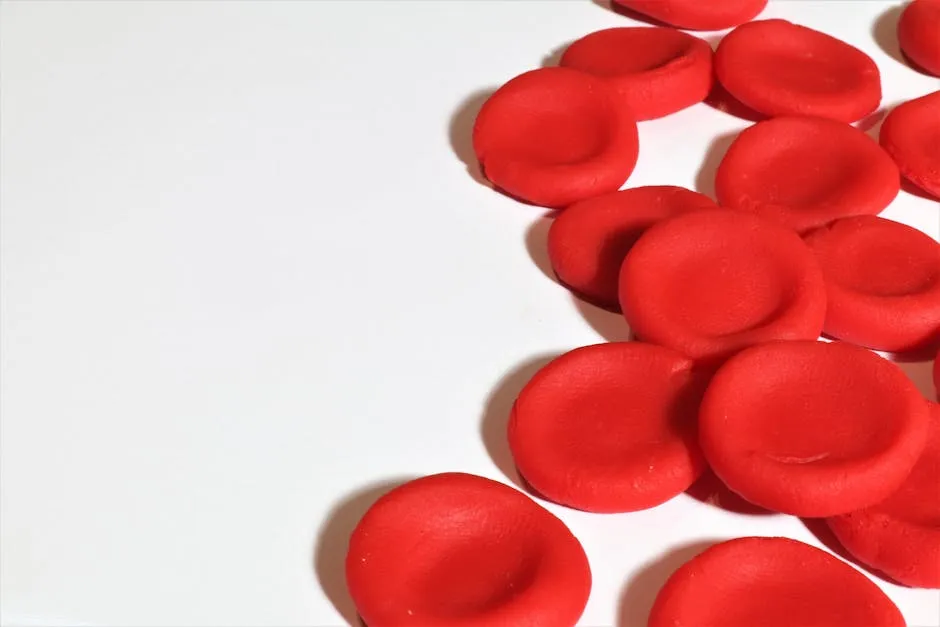Introduction
Seurat is a powerful tool for analyzing single-cell RNA sequencing data. It helps you make sense of complex biological data by providing various analysis techniques. One key aspect of Seurat is embedding data. This process is crucial for visualizing and interpreting intricate datasets. In this section, we’ll focus on how to add and integrate embedding data into Seurat effectively. If you’re looking to deepen your understanding of data science, consider picking up The Art of Data Science: A Guide to Thinking Through Data. It’s a fantastic read for anyone venturing into the world of data!
Summary and Overview
Embeddings represent reduced-dimensionality representations of high-dimensional data. In single-cell analysis, embeddings help simplify complex datasets, making them easier to visualize and interpret. Adding embeddings to Seurat enhances your analysis by allowing you to observe cell relationships and clustering patterns more clearly. We will cover essential methods and functions, such asCreateDimReducObject and IntegrateEmbeddings. This article is structured to guide you through each step seamlessly, ensuring you can follow along easily. If you want to get hands-on with R, I recommend checking out R for Data Science: Import, Tidy, Transform, Visualize, and Model Data. It’s a great resource for learning R programming!

Understanding Embeddings in Seurat
What Are Embeddings?
Embeddings are a way to reduce the dimensionality of data while preserving its structure. They allow you to visualize data points in fewer dimensions, making it easier to understand relationships. Common types of embeddings include Principal Component Analysis (PCA), Uniform Manifold Approximation and Projection (UMAP), and t-distributed Stochastic Neighbor Embedding (t-SNE). Each method has its strengths, offering different insights into the data. If you’re curious about a practical guide on data analysis, check out Single-Cell RNA-seq Data Analysis: A Practical Guide. Understanding these embeddings is crucial for interpreting your results. They help you see how cells cluster together based on their gene expression profiles. For instance, UMAP often provides clearer visual separation between different cell types. This clarity allows researchers to make more informed biological interpretations and hypotheses. By grasping the significance of embeddings, you can leverage Seurat to its fullest potential. The next sections will guide you through adding and integrating these embeddings into your Seurat workflows. For those venturing into data visualization, consider Data Visualization: A Practical Introduction. It’s a fantastic resource for enhancing your data presentation skills!
Why Use Embeddings in Seurat?
Embeddings play a crucial role in single-cell analysis. They simplify complex high-dimensional datasets. This simplification allows researchers to visualize and interpret data more effectively. Using embeddings can enhance your understanding of cell relationships. For instance, you can observe how different cell types cluster together. This clustering often reveals biological insights that are not apparent in raw data. If you’re interested in diving deeper into machine learning techniques, check out Hands-On Machine Learning with Scikit-Learn, Keras, and TensorFlow for practical applications! Many studies have demonstrated the power of embeddings. For example, UMAP has been widely adopted for its ability to preserve local structures in data. This characteristic helps in identifying subpopulations of cells. Similarly, t-SNE is effective in visualizing high-dimensional data, especially when focusing on specific features. Statistics show that embedding techniques significantly improve clustering accuracy. A study found that UMAP outperformed t-SNE in preserving global structure while maintaining computational efficiency. Such insights underscore the importance of incorporating embeddings into your analysis. In summary, embeddings provide a clearer view of complex data. They facilitate better visualization and clustering, leading to valuable biological discoveries. If you’re looking for a comprehensive guide on statistical learning, you may find The Elements of Statistical Learning: Data Mining, Inference, and Prediction a great addition to your library!
Integrating Existing Embeddings
Integrating pre-computed embeddings into a Seurat object can enhance your data analysis significantly. Using theIntegrateEmbeddings function allows you to incorporate these embeddings effectively. If you’re eager to learn more about practical statistics, consider Practical Statistics for Data Scientists: 50 Essential Concepts. It’s a must-have for aspiring data scientists!
The IntegrateEmbeddings function has several key parameters. You will need to specify the anchorset, which includes your pre-computed embeddings. Additionally, you can choose a new.reduction.name for the integrated embeddings. Other parameters like k.weight and sd.weight help control how the integration is performed.

Best Practices for Managing Embeddings
Organizing Embedding Data
Proper organization of embedding data is crucial for clarity. Start by naming your embedding slots thoughtfully. Use clear and descriptive names that reflect the method used or the dataset they originate from. This practice helps avoid confusion when revisiting your analyses later. If you’re interested in effective data mining techniques, I suggest Data Mining: Concepts and Techniques. It’s a classic in the field! Maintain clarity in complex datasets by creating a structured naming convention. For example, you might include the method and date in your slot names, likePCA_2023_01. This will make it easier to track changes and versions over time.

Visualizing Embeddings
Visualizing embeddings is crucial for understanding single-cell RNA sequencing data. Seurat provides several plotting functions to help you achieve this. Two popular functions areDimPlot and FeaturePlot.
DimPlot allows you to visualize cell clusters in reduced dimensions. You can easily see how different cell types group together. For example, if you have performed UMAP or t-SNE, using DimPlot can reveal distinct clusters corresponding to various cell types. If you’re looking for a guide to R graphics, consider R Graphics Cookbook: Practical Recipes for Visualizing Data for practical insights!

DimPlot function:
DimPlot(pbmc, reduction = "umap")FeaturePlot helps you visualize the expression of specific genes across your cells. You can see where a gene is expressed within the cell population. It’s particularly useful for identifying marker genes that define cell types.
An example usage of FeaturePlot looks like this:
FeaturePlot(pbmc, features = c("MS4A1", "CD79A"))
Case Studies and Applications
Example 1: Analyzing PBMC Data
Let’s walk through a step-by-step case study using real PBMC data. First, load the PBMC dataset using Seurat:pbmc <- LoadData("pbmc3k")pbmc <- NormalizeData(pbmc)
pbmc <- FindVariableFeatures(pbmc)pbmc <- RunPCA(pbmc)DimPlot:
DimPlot(pbmc, reduction = "pca")pbmc <- RunUMAP(pbmc, dims = 1:20)
DimPlot(pbmc, reduction = "umap")FeaturePlot to examine specific gene expressions across your clusters. This helps identify which genes are markers for specific cell types. If you’re interested in a comprehensive resource on data analysis, look into Data Analysis with R for more in-depth techniques!

Example 2: Integrating External Embeddings
Imagine you have a set of embeddings generated from a different analysis tool, and you want to bring that information into Seurat for further exploration. This scenario is common in single-cell analysis, where researchers often utilize various software for data processing. Here’s how to incorporate these external embeddings into your Seurat object. First, ensure your external embeddings are formatted correctly. You should have a data frame with cell identifiers as row names and the corresponding coordinates as columns. Let’s assume your external embeddings are stored in a variable calledexternal_embeddings. If you want to learn more about the fundamentals of machine learning, consider Machine Learning Yearning for a deeper understanding!
Step-by-Step Instructions
1. **Load Your Seurat Object** Start by loading your existing Seurat object. For example:pbmc <- LoadData("pbmc3k")CreateDimReducObject() function to convert your external embeddings into a format that Seurat understands. Here’s how:
embedding_obj <- CreateDimReducObject(embeddings = external_embeddings, key = "Ext_")pbmc[["external"]] <- embedding_objDimPlot() function to visualize the newly added embeddings:
DimPlot(pbmc, reduction = "external")

Conclusion
Adding embedding data to Seurat is vital for enhanced analysis. It allows for clearer visualizations and better clustering of single-cell data. By integrating embeddings, you gain unique insights that can inform your research. If you’re curious about data science design, I recommend The Data Science Design Manual for a thorough overview! Explore different embedding methods to visualize your data effectively. Don’t hesitate to experiment with various techniques and tools to see what works best for your specific dataset. For those interested in advanced techniques, I recommend checking out the official Seurat documentation and community resources. There’s always something new to learn in the world of single-cell analysis!For best practices in data visualization, consider exploring best practices for using Israel Central Bureau of Statistics data visualization.
FAQs
What is the purpose of embeddings in single-cell analysis?
Embeddings help visualize high-dimensional data in lower dimensions, making patterns easier to discern.
Can I replace existing embeddings in a Seurat object?
Yes, you can create a new DimReduc object with new embeddings. This method retains your original data.
How do I troubleshoot issues with adding embeddings to Seurat?
Check for dimensionality mismatches. Ensure your embeddings are correctly formatted and aligned.
What is the difference between PCA, UMAP, and t-SNE embeddings?
PCA is linear, while UMAP and t-SNE are non-linear techniques. UMAP often preserves local structure better than t-SNE.
Where can I find additional resources for learning Seurat?
Check online tutorials, the official Seurat documentation, and community forums for further exploration.
All images from Pexels




